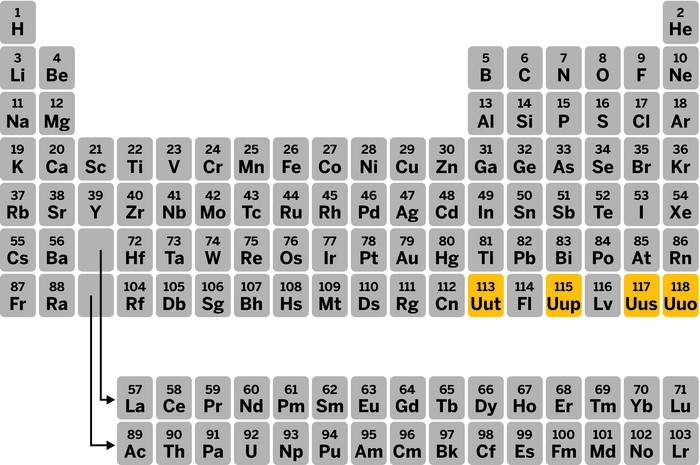Advertisement
Grab your lab coat. Let's get started
Welcome!
Welcome!
Create an account below to get 6 C&EN articles per month, receive newsletters and more - all free.
It seems this is your first time logging in online. Please enter the following information to continue.
As an ACS member you automatically get access to this site. All we need is few more details to create your reading experience.
Not you? Sign in with a different account.
Not you? Sign in with a different account.
ERROR 1
ERROR 1
ERROR 2
ERROR 2
ERROR 2
ERROR 2
ERROR 2
Password and Confirm password must match.
If you have an ACS member number, please enter it here so we can link this account to your membership. (optional)
ERROR 2
ACS values your privacy. By submitting your information, you are gaining access to C&EN and subscribing to our weekly newsletter. We use the information you provide to make your reading experience better, and we will never sell your data to third party members.
Nuclear Chemistry
First actinium crystals reveal unique coordination
Analysis of the crystal structure shows the need to directly study radioisotopes, not their surrogates
by Fionna Samuels
July 25, 2024

New radiopharmaceuticals have radiochemistry research heating up. Such drugs are key for targeted alpha therapy, or TAT, a cancer treatment wherein doctors deliver isotopes that emit α particles to tumors, killing the cancer cells. Actinium-225 is one promising isotope, but its fundamental binding properties have remained largely unknown, making it difficult to design better actinium-chelating ligands. Now a team of researchers at Lawrence Berkeley National Laboratory has published the first actinium single crystal structure, revealing the element’s unique bonding behavior (Nat. Commun. 2024, DOI: 10.1038/s41467-024-50017-5).
The properties that make actinium-225 attractive for TAT—namely, that it emits a large amount of α radiation and has a half-life of just 10 days—also make it incredibly difficult to study. So lead researcher Rebecca Abergel turned to actinium-227, a slightly heavier isotope with a 22-year half-life.
To source the isotope, the scientists plundered a sample of protactinium-231 the lab had inherited in the 1960s. After the parent isotope spent decades decaying in a radiation-safe cabinet, the old vial held some actinium-227 mixed with other decay products. Abergel’s team was able to separate the daughter isotope and began using and reusing the precious sample to explore actinium chemistry.
When Jennifer Wacker joined Abergel’s lab as a postdoctoral fellow, she was tasked with growing actinium crystals with just 5 µg of meticulously separated actinium-227. Working with such a small amount required immense creativity, she says. There wasn’t enough of the element to grow crystals of pure actinium or to crystallize an actinium-ligand complex. Instead, she used a protein to capture ligand-bound actinium in solution and ultimately precipitate crystals composed of the chelated isotope wrapped in the macromolecule.
Probing these crystals with powerful X-rays revealed that actinium coordinates with the ligand differently than other f-block elements the researchers had studied. Such differences could have real-world consequences when it comes to designing better ligands for radiopharmaceuticals. “So far, most people have relied on the chemistry of lanthanide surrogates or other actinides to build hypotheses about how actinium coordinates with molecules,” Abergel says. But the newly revealed actinium-227 crystal structure shows that depending on such proxies could misguide researchers.
“This is a step in the path forward towards making advances in new designs for [TAT] ligands,” says radioisotope researcher Sandra Davern of Oak Ridge National Laboratory, the US’s largest producer of actinium-225 for TAT. “It’s a fundamental study on which a lot of new research will be built,” she says, and the work shows that to truly understand an isotope, scientists must study that isotope, not a surrogate.



Join the conversation
Contact the reporter
Submit a Letter to the Editor for publication
Engage with us on Twitter